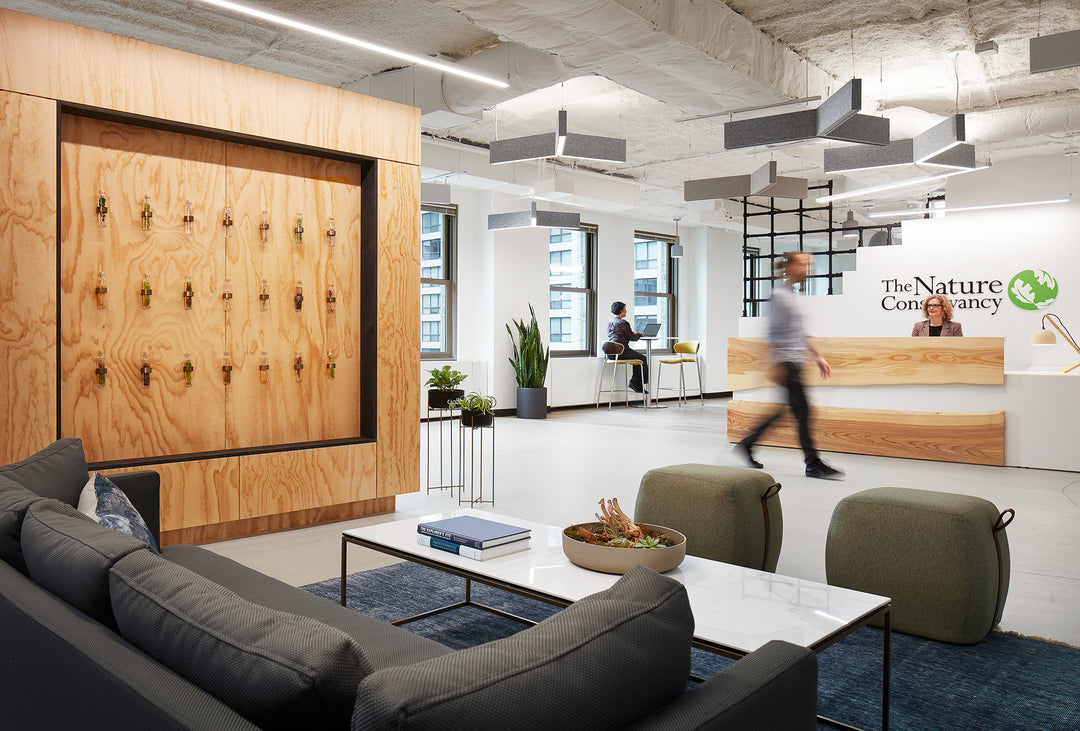Coworking Space Layouts for 3 Kinds of Shared Offices
The coworking trend is booming and some markets – like Chicago, New York, and Los Angeles - are seeing growth of over 20% each year. Why is this? Independent contractors and start-up companies are still driving the demand for coworking offices. What’s interesting is that there’s been a shift with enterprise companies utilizing shared office spaces too – everyone wants in on this new kind of office life. As the demand for shared offices increases, so does the need for offering a different kind of coworking experience. Even though traditional coworking space is still the most common, workers are becoming more diverse and require unique shared office environments. Since every office is different, there are various shared office space layouts to choose from. In this blog, we will discuss three common coworking layouts and how they can benefit your company in the long run.
1. What does a traditional coworking office space layout look like?
Traditional coworking office designs have to appeal to a variety of workers, so you’ll find different kinds of space layouts such as single workstations, small groupings of desks like this benching system, and even a few private offices. An independent contractor or freelancer might only require a single workstation. A small start-up can take that a step further with a grouping of workstations with cleverly placed panels for added privacy, as well as rentable conference rooms. For larger companies working on sensitive projects that require more discretion, private offices are sometimes available for additional fees. The most important thing a traditional coworking office can offer is flexible membership rates that can be tweaked as needed – this eliminates the real estate guesswork many small businesses and entrepreneurs struggle with when launching a new business.
2. What does a premium coworking office design involve?
There’s a strong demand for a premium shared office experience and some coworking offices are offering unique extras to stay ahead of the curve. Members of high-end coworking spaces demand an impressive reception area with comfortable seating and interesting art work in the lobby. The higher membership fees typically come standard with a friendly receptionist to greet clients, field phone calls, and collect mail. Ergonomic furniture such as sit to stand desks and high-quality office chairs are available, and members may even be able to select the exact type of desk and chair they wish to use. You’ll likely see a lot more private office options available in these spaces. Expect a kitchen stocked with an assortment snacks and beverages as well as sleek dining furniture to serve as a spot for ad hoc meetings. Ample lounge furniture in common areas gives members a variety of options for places to work, decompress, or take a quick conference call. Premium shared offices may even include a meditation room that can double as a nap zone or yoga studio. A quiet space to relax during the workday can be invaluable for those working long hours. Many shared offices even host complimentary fitness classes in these rooms – talk about a major perk for someone spending long hours at the office. And speaking of extras, don’t be surprised if you find manicure stations and other self-care freebies in some of the more exclusive coworking spots.
3. How is a minimalistic style coworking office space different?
For the independent contractor working from home, a more minimalistic coworking office can sometimes do the trick. This kind of shared office will still include good basics like coffee, tea, Wi-Fi, and desks, but because these items are usually non-name brand, you can expect membership fees that are fraction of what a traditional space might cost. Another difference with more austere shared offices is that the furniture can be used or refurbished. You’ll be happy to learn that refurbished office furniture is actually better for the environment, so you can feel good about your decision to go with a more minimal workspace. Ample seating is available in these offices, but don’t expect your task chairs to have all the bells and whistles. The paired down shared office solution can be perfect for work-from-homers looking for an office to duck into periodically for a change of scenery.
There’s no denying that coworking office spaces are on the rise. No two are the same, but you’ll find similarities between many if you look hard enough. Deciding what you want out of your workspace will help you narrow down which is solution perfect for you. With a wide variety of coworking offices on the market, there’s definitely something out there for everyone. The only problem is trying to decide which one to join.
For more information on coworking, please see our infographic on coworking, and our blog posts on the basics of coworking and what coworking can do for you. For more information on office furniture for working spaces, industry trends, and to stay in touch, please follow Rework on Twitter and LinkedIn.




